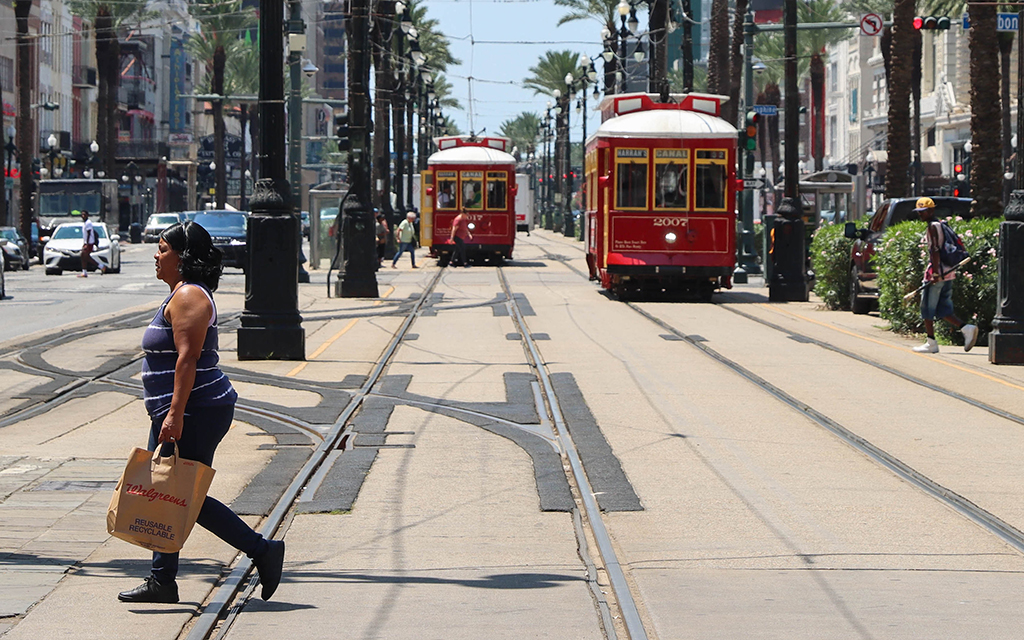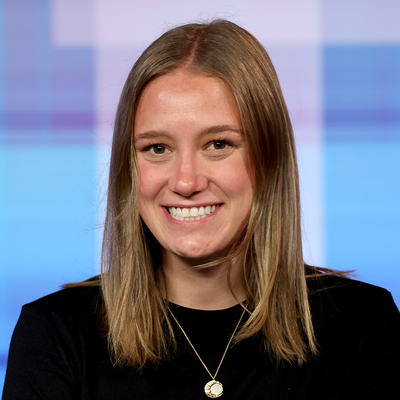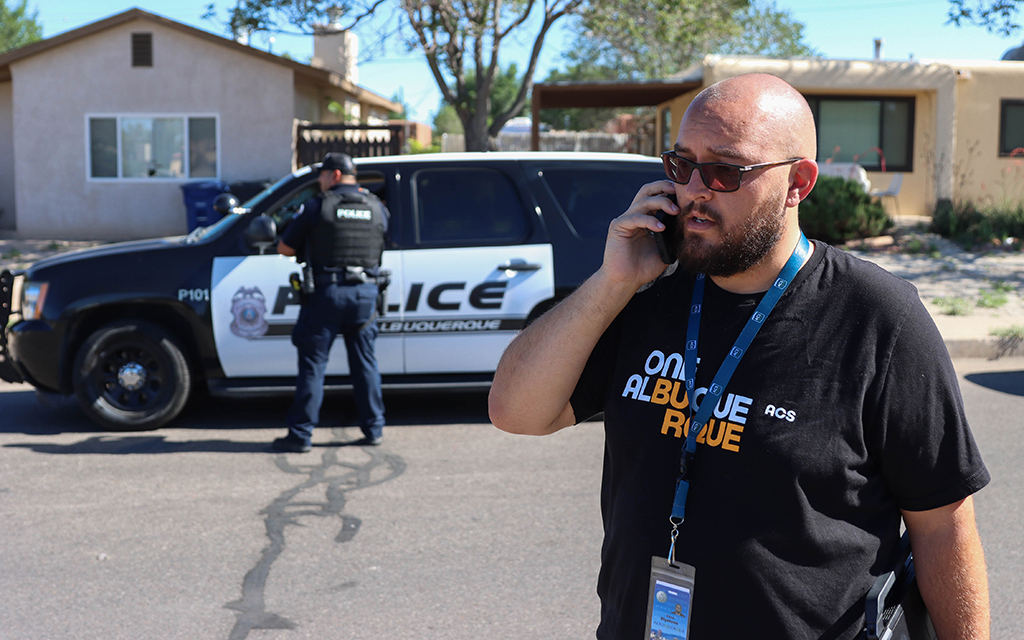
The ‘no arrest’ model: Albuquerque’s civilian first-responders take nonviolent calls instead of police
Oct. 2, 2022
ALBUQUERQUE, N.M. – Voters in 2017 first elected Albuquerque Mayor Tim Keller on a platform that included public safety as a main tenet.
Once in office, Keller explored new approaches to how police respond to calls. He looked at a variety of public safety programs that included civilian responses to certain non-violent 911 calls.
Then George Floyd was killed by Minneapolis police in 2020. The aftermath spurred both interest and willingness from residents and city officials to change policing across the city, Joshua Reeves said.
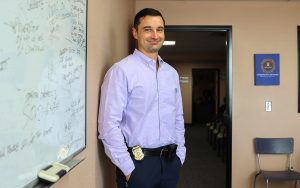
Commander Matt Dietzel of the Albuquerque Police Department is photographed in his office on July 6, 2022. Dietzel is the acting commander of the police department’s crisis intervention team. (Photo by Kate Heston/News21)
From there, Albuquerque Community Safety was born, a civilian response team trained to handle nonviolent calls – from welfare checks and mental health crises to helping unhoused people find shelter space. Reeves works for the city’s newest public safety department and serves as the public outreach and performance division manager.
A public safety agency with separate funding from the police and fire departments, it has a budget of about $11.7 million for fiscal 2023. In comparison, the police budget is about $262 million.
Community Safety employs roughly 50 responders, but the long-term goal is to hire as many as 400. Officials said they hope to reach 24/7 service as early as this fiscal year.
When 911 receives a call about a nonviolent incident, Community Safety personnel can be dispatched instead of – or alongside – police officers. In fiscal 2022, the department diverted more than 6,000 calls from police, according to city documents.
At the beginning, some police officers were resistant to the idea.
Chris Blystone, a Community Safety responder, said police feared that unarmed civilian responders would get hurt.
“I’ve heard officers say, ‘You know, you’re all going to die,’ literally, ‘You’re all going to die,’” Blystone said. “And not even one of us has been punched yet.”
Matt Dietzel, commander of the Albuquerque Police Department’s crisis intervention team, said that mentality – that people with mental illnesses or unhoused people are inherently dangerous and high risk – was the mindset at the police department.
Dietzel said police officers were “straight up afraid” of people with mental health challenges.
Before they joined Community Safety, Blystone and his partner, Debbie Vigil, worked in various mental health and crisis roles in Albuquerque. Throughout their collective 45 years of experience, they knew how police officers viewed social workers and the role they played in the community.
“They just didn’t seem like they took us seriously because they’re here to take people and arrest them and stuff like that, but we’re trying to help them,” Vigil said.
Since the launch of Community Safety in 2021, Vigil and Blystone said they have noticed a perspective shift among police officers.
Blystone, Vigil and Reeves all said that none of the Community Safety responders has been physically attacked in any capacity.
Eventually, they said, police officers seemed to come around.
Blystone and Vigil recently attended training with the police department, and the change was obvious, Vigil said.
“It was a totally different attitude, and they were very respectful and very professional with us,” she said. “It’s just like a real instant shift.”
Dietzel said the civilian response is not only the right thing to do for residents, but it helps officers inundated with more calls than they can handle. The Albuquerque Police Department, like others across the country, faces a staffing shortage.
“The numbers game still justifies this,” Dietzel said. “Even if you don’t want to get into all the social justice issues of having the police respond to a nonpolice issue, it still comes down to there are not enough police officers to meet the need.”
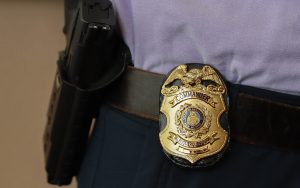
Albuquerque police Commander Matt Dietzel says the city’s new Community Safety department helps sworn police officers, who get more calls than they can handle. (Photo by Kate Heston/News21)
The primary difference between Albuquerque Community Safety and the police is the Community Safety responders don’t arrest people. They don’t carry weapons or badges – by design. The mayor’s office, along with local community leaders and social workers, came together to discuss exactly what responders should look like.
One question was about uniforms, Reeves said.
“People said, ‘We don’t want them to have collars because collars are triggering,’” he recalled. “And we said, ‘Do you want them to have any type of defense weapons or anything like that? People said, ‘No, we don’t want them to have Tasers. We don’t want them to have zip ties, handcuffs. But we do want them to have NARCAN. Food, water, hygiene kits.”
The “no arrest model” is the inverse of the culture Dietzel experienced during his early days with the police department, where officers treated every call like a problem that could only be resolved by arrest, citation or hospitalization.
Community Safety is still a new agency, and it’s difficult to quantify whether it has had a significant impact on use of force or fatal encounters in Albuquerque. The agency was in operation for only the last four months of 2021, but the number of use-of-force incidents increased last year, according to the Albuquerque Journal.
Community Safety is evaluating its training schedule, figuring out what kinds of cars the responders should drive. And it still needs to recruit and train more responders before it can meet its goal of 24/7 services.
The agency recently launched an awareness campaign, including bus banners and television and radio ads.
“We recently had a win where even someone who was unsheltered on the street recognized our responders and came up to them and went, ‘Hey, I know you help … can you help me get connected to these services?’” Reeves said.
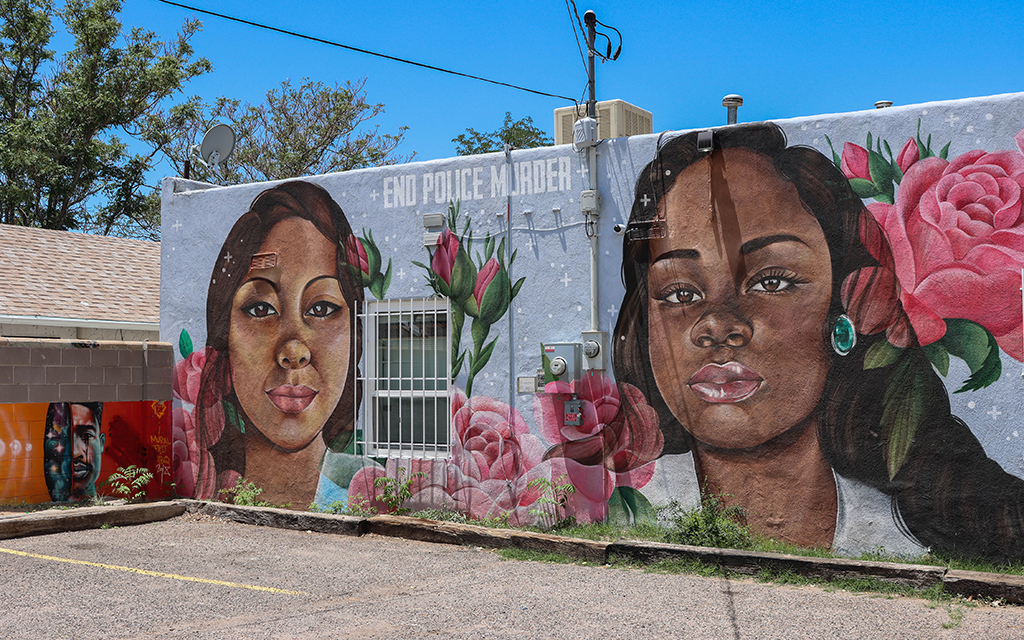
A mural outside the Albuquerque Center for Peace and Justice features images of Loreal Tsingine, left, who was fatally shot by Winslow, Arizona, police in 2016, and Breonna Taylor, who was killed in her home by police in Louisville, Kentucky, in 2020. (Photo by Kate Heston/News21)
Our content is free to use. If you want to republish this story, find our terms of use here and download the text story and assets.
